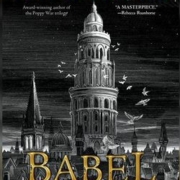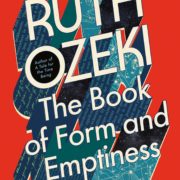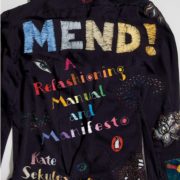The Dallergut Dream Department Store by Miye Lee
Miye Lee’s THE DALLERGUT DREAM DEPARTMENT STORE imagines a world that our subconscious minds visit while we sleep. We do not remember this world when we wake up, but it is where we purchase our dreams every night.
The novel is set almost exclusively in this dream world. The main character, Penny, has just been hired at the Dallergut Dream Department Store – the most famous dream store in the world. She has some basic knowledge of dream production and sales, as do most citizens of this world. Penny is curious and diligent, and eager to get to work.
Dallergut himself is somewhat eccentric. He is the top name in dream sales and has personal relationships with many of the dream artists, but he also seems to be scatterbrained and flighty. His office is a mess, that Penny wants to clean up, but his ability to match dreams to dreamers is uncanny.
Each floor of Dallergut’s department store is dedicated to a different type of dreaming. From the generic dreams of hanging out with friends on the second floor to the dreams of swimming through the ocean as a whale – an extremely popular dream available only by special order.
Dreams are created by artists, who craft them much as an author does a novel. Dream artists usually specialize in a specific type of dream, even nightmares. There are many dream artists in the world, but the most famous are the Big Five, who the world treats as celebrities and Dallergut knows personally.
In this world, dreams manifest as small boxes. These boxes fill the various shelves of the department store where our unconscious selves can purchase them. Dream world citizens are also able to buy the dreams. They experience them as we do, the only difference is that they are aware of where the dreams come from.
Generally the dream world is very like our own: there are food vendors on the sidewalk, Penny lives in an apartment building, even the store is outwardly very normal. But there are also magical creatures roaming the streets, ready to give pajamas and robes to visitors from our world who arrive without them. Their world also trades in emotions distilled from the dream visitors.
When a person from our world buys a dream, they agree to a payment plan that will collect some of their feelings upon waking. These emotions can then be taken by the dream world citizens to feel calm or excited — or they can be taken to the bank and converted into money.
Each chapter of this relatively short novel explorers a different type of dreaming. There are brief glimpses into our world to show how the things we dream can affect our real lives.
It is easy to get lost in the world that Lee has built. Her deep interest in dreams is explored both in her author’s note at the beginning of the book and in the translator’s note at the end.
Book review by Alyssa Berry, Technical Services Librarian










